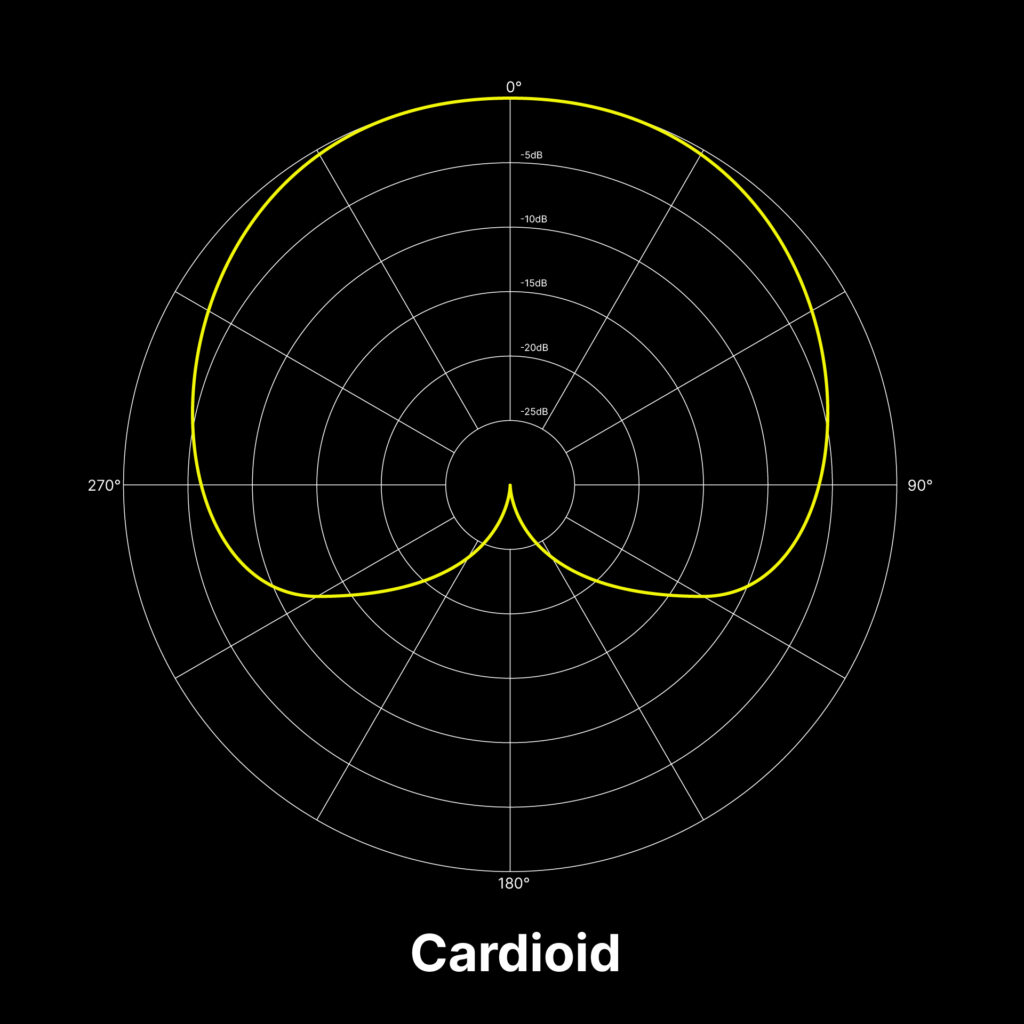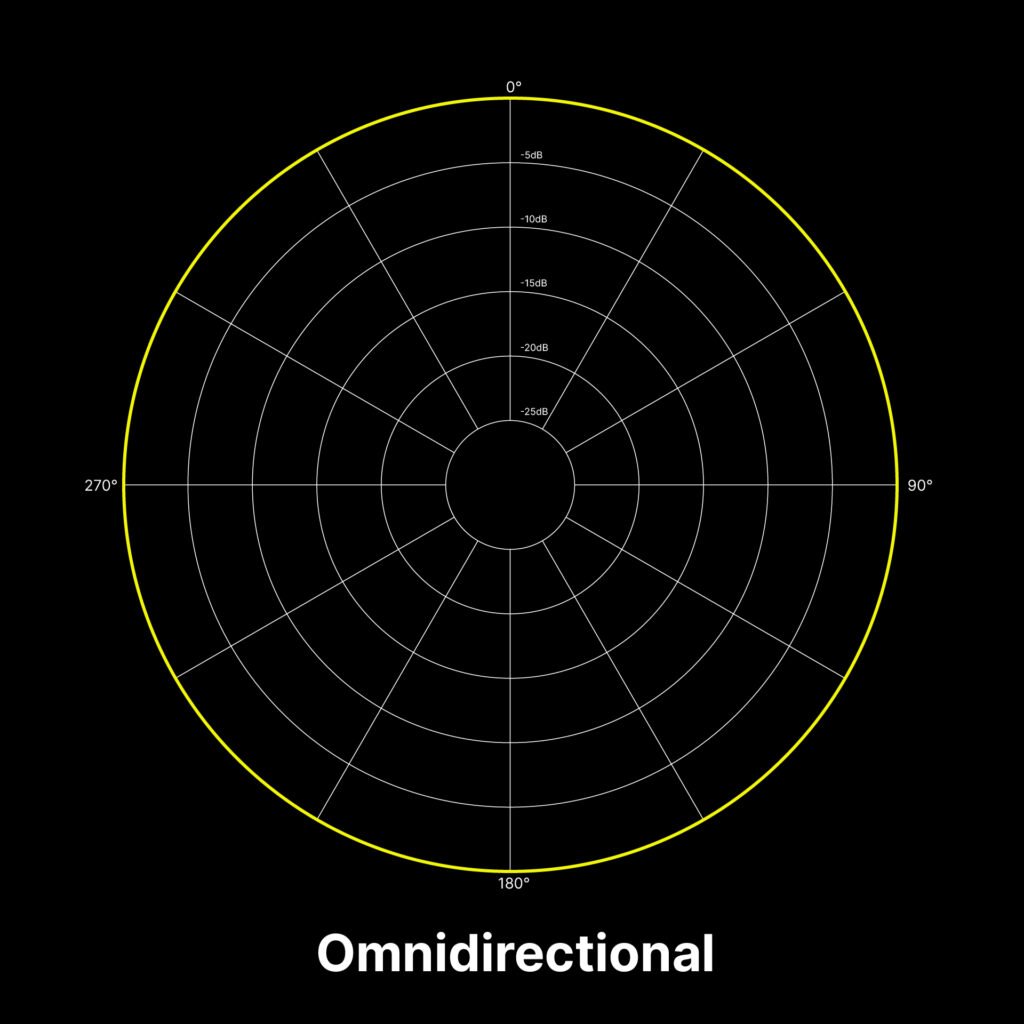Illustration: Michael Haddad
All microphones are constructed a bit differently, and this affects how they capture sounds.
One of several key characteristics you’ll want to understand about your microphones is their polar patterns. Knowing which polar pattern(s) your mic supports can make a huge difference to how you approach the recording process—in this article, we go over what polar patterns are, highlight a few of the most common and important ones, and discuss how they can shape your recordings.
Let’s get started!
What are polar patterns?
Polar patterns (also sometimes called pickup patterns) describe a microphone’s directionality, or how well it picks up sound waves coming from different directions. They’re important because understanding them can help you better isolate particular sound sources from others, sculpt the balance between dry and room sound, and more.
How to read polar pattern charts
If you look up a particular microphone model online, you should be able to find its polar pattern chart, which gives you an easy-to-understand visualization for how it captures sound from different angles.
Here’s an example:

These diagrams portray the 360° field surrounding a microphone—0° represents the front of the mic, which has maximum sensitivity. Meanwhile, 180° represents the back of the mic; in the example above, you can see that this mic has the least amount of sensitivity there, meaning it’ll be most effective at attenuating the sound directly behind it, while capturing a limited amount of sound from its sides.
As we highlight the most common polar pattern types below, we’ll also include their corresponding charts for reference.
Polar pattern types you need to know
While there are theoretically an infinite number of polar pattern types, most microphones are built around a few well-known variations—let’s explore each of these in detail.
1. Cardioid

Cardioid is probably the most common polar pattern when it comes to microphones that favor a certain direction or angle. It’s the most sensitive from the front, less sensitive on either side, and least sensitive from the rear. These features make it effective at isolating the sound you want to pick up from the sounds you don’t (like unwelcome ambient noise).
Loud settings like a live show can benefit from the strong directionality that a cardioid provides, making it easier to focus on a single sound source like a lead vocalist while avoiding feedback or overlap from speakers and other musicians. You can also achieve a stereo recording technique called X/Y recording by placing two cardioid microphones at 90° angles, giving the left and right sides dedicated space to shine.
Fun fact: The ‘cardioid’ shape illustrated by this polar pattern comes from the Greek word for ‘heart.’
2. Supercardiod (and hypercardioid)


You may have already guessed, but the supercardioid and hypercardioid polar patterns are even more directional than the standard cardioid. They’re slightly more sensitive from the back and have an even narrower range of sensitivity from the front. This means you can potentially get a recording that’s super dry with the lowest amount of background noise or feedback possible.
A classic example of this souped-up cardioid pattern is the long and narrow shotgun microphone—as the name suggests, it really only cares about what it’s being pointed at (even from a distance). This makes shotgun mics a popular choice for applications like film, television shows, sports, and documentaries.
3. Omnidirectional

In stark contrast to cardioids, an omnidirectional pattern is much like a perfect sphere that will pick up sound waves equally, regardless of the direction or angle they’re coming from. This equal sensitivity is a double-edged sword; while you don’t need to point the microphone in any one direction, it’s also much harder to avoid unwanted background noise, feedback, or other sound sources bleeding into the recording.
However, omnidirectional microphones do generally boast the flattest frequency and bass response. This means that, given a good recording environment (like a well-treated studio), you can get some really natural-sounding recordings from an omnidirectional mic, whether it’s low-end sounds or big ensembles.
4. Bidirectional

Also known as a figure-eight configuration, bidirectional microphones are equally sensitive from the front as they are from the back. They’re also the most effective polar pattern at blocking out sound coming in from the sides of the mic.
This pattern can lend itself to quite natural-sounding recording because of how it captures the acoustic characteristics of the surrounding space along with the sound source itself. It’s a key component for popular techniques like Blumlein and mid-side stereo recording, but be aware that bidirectional microphones aren’t as well suited for working in windy environments or capturing bass frequencies as most other patterns.
A free downloadable chart for common polar patterns
Now that you understand what polar patterns are, you may be interested in being able to have the charts above readily available at your fingertips.
If so, you can download high-quality versions of all of the charts above for absolutely free by clicking here. Keep them in a folder for offline use, make them your desktop wallpaper, or print them out—do whatever you need to do!
Microphone polar patterns: Conclusion
And there you have it! While the best thing you can do is test microphones with various polar patterns to hear the differences firsthand, hopefully this article gave you a solid foundation for what they are and how they work. It’s worth noting that these days, there are also many multi-pattern microphones available, which let you switch between multiple patterns with a single unit.
Do you have any questions on polar patterns? What other topics would you like to see us cover next? Start a conversation with us and an ever-growing community of other music creators via the Splice Discord.
Explore royalty-free sounds from leading artists, producers, and sound designers:
January 28, 2025





.svg)
.svg)
.svg)
